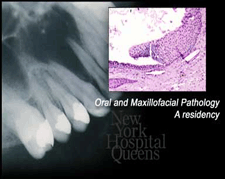المقالات
Periodontitis

Periodontitis is the number one cause of adult tooth loss. It is characterized by an inflammation and/or degeneration of the tissues that give support to the teeth - namely the gums, the connective tissue (the periodontal ligament), and the surrounding bone (the alveolar bone). Periodontitis is a continuation of the infection that begins with gingivitis, a condition in which plaque, a sticky, colorless film of food and bacteria, forms on the teeth. If not removed each day by brushing and flossing, the plaque hardens and forms tartar (also called calculus). The body's reaction to the bacteria in plaque and tartar causes the typical signs of gingivitis - red and swollen gums. As the plaque and tartar work their way down below the gumline, the gums begin to separate from the tooth as the bone and connective tissue are destroyed. Spaces form between the teeth and gums; these spaces are called periodontal pockets. The formation of these pockets indicates progressive destruction of the supporting tissue, and creates the perfect environment for the growth of even more harmful bacteria. Your body responds to the infection by sending white blood cells (your body's natural defense) and other immune cells to the infected area. When the white blood cells reach your gums, they release enzymes to attack the infection. Unfortunately, these enzymes combine with the bacterial toxins, and together they break down bone tissue as well as the gum's natural attachment to the gums.
When periodontitis continues unchecked, the bone loss also continues. Eventually so much bone is lost that teeth become loose. As the disease progresses, the periodontal pockets become deeper and bone loss increases. Teeth become loose and may move (migrate) within the mouth, resulting in gaps in your smile.
The infection can also become painful, as secondary infections and abscesses can form. Periodontitis can affect one area of the mouth, multiple areas, or the entire upper and lower arch. It rarely occurs prior to 18 years of age. We use an instrument called a periodontal probe to check for periodontal disease during your regular exam. The probe allows us to check for pockets and bone loss. It's always best to diagnose and treat periodontal disease in its early stages, before bone has been lost, because once bone tissue is gone, it never grows back on its own.
We have a wide array of treatments and procedures to remove the tartar and bacteria that cause periodontal disease.
to promote reattachment of the gum tissue to the tooth.
* Periodontal surgery and minor bone shaping may be necessary to restore health to your gums.
* Frequent follow-up care, followed by meticulous daily home care, is essential to monitoring and controlling periodontitis.
